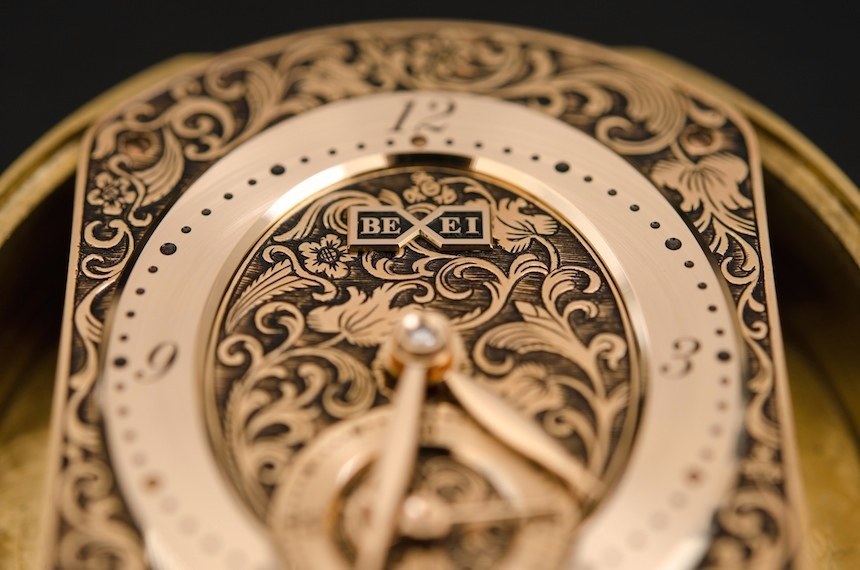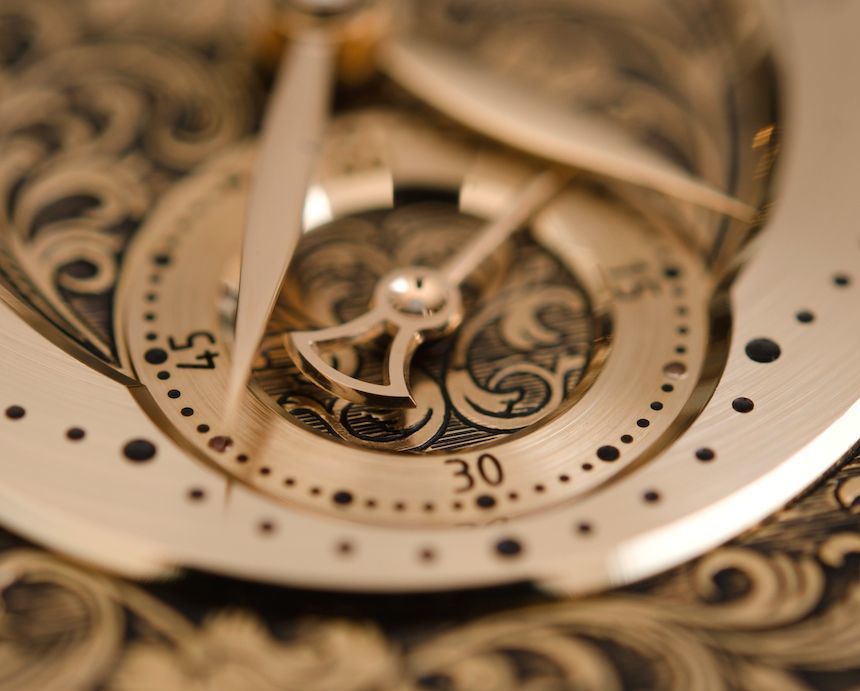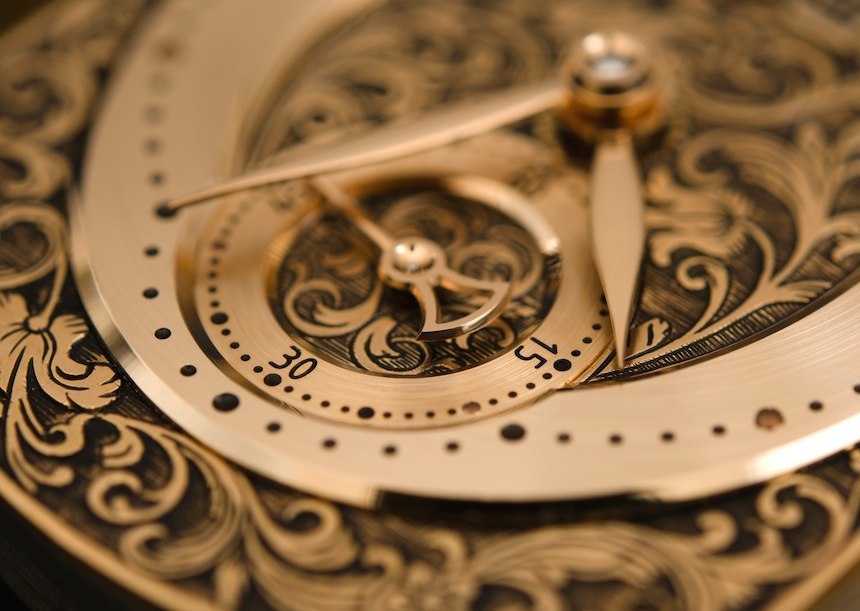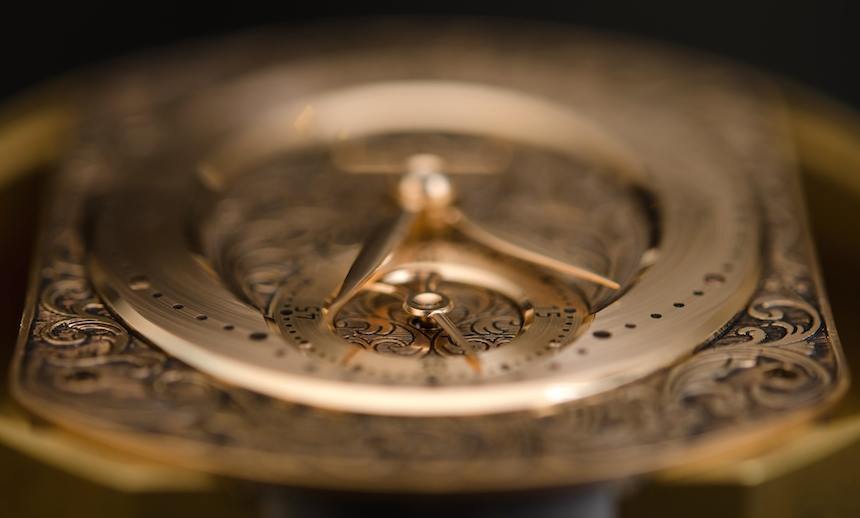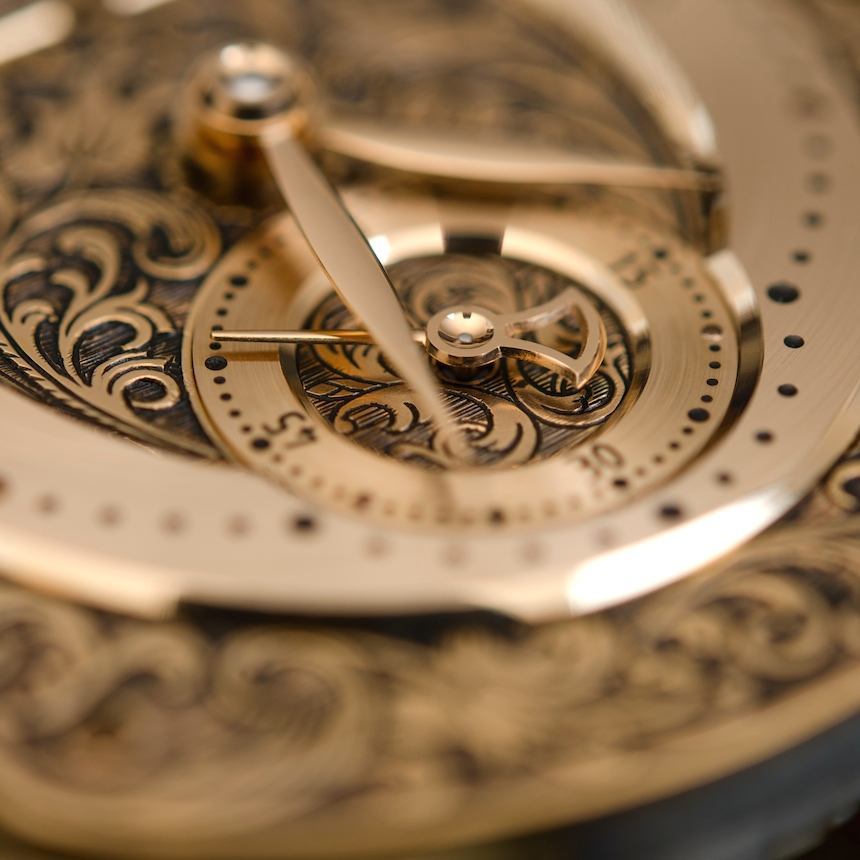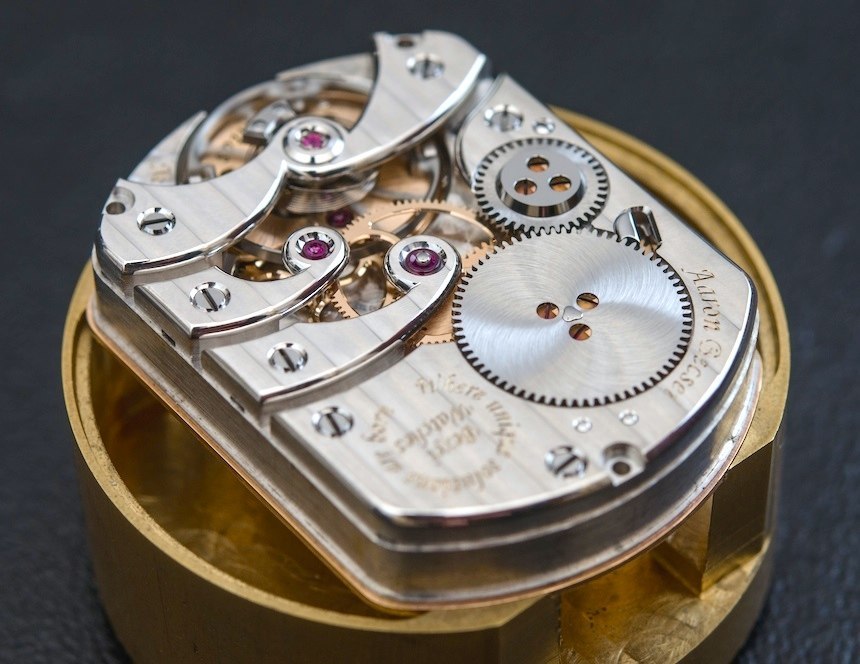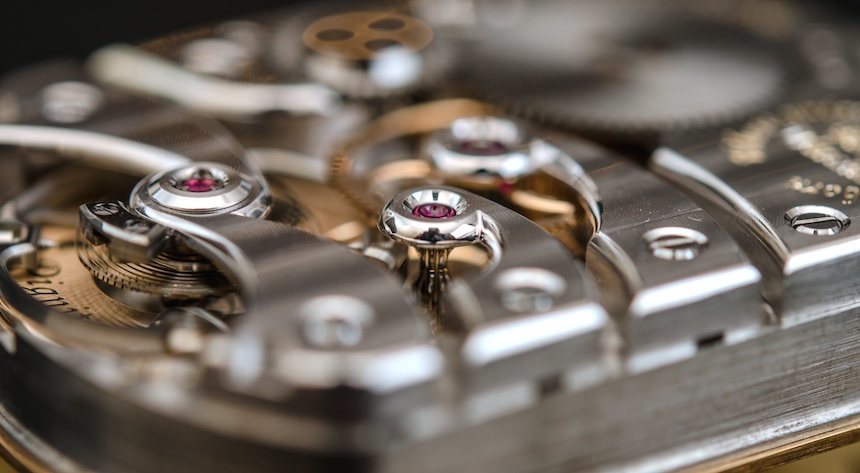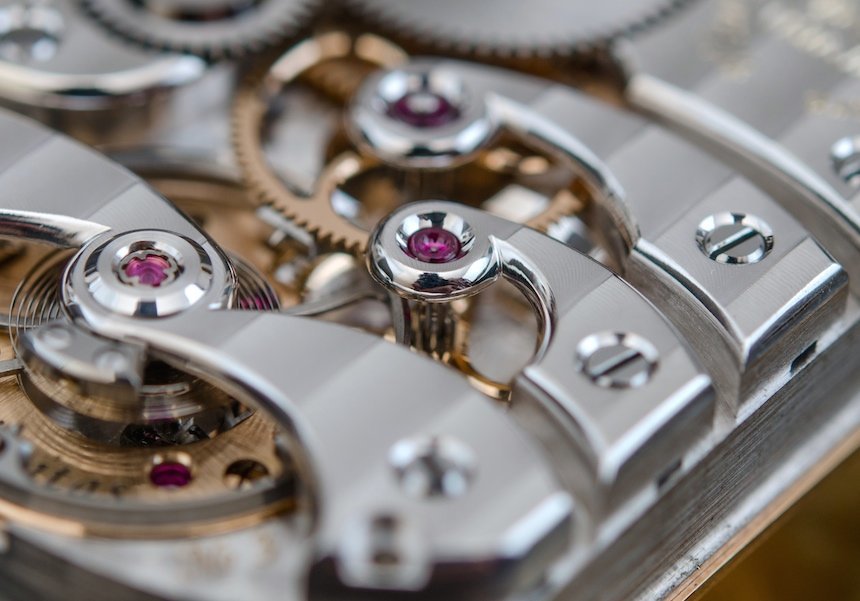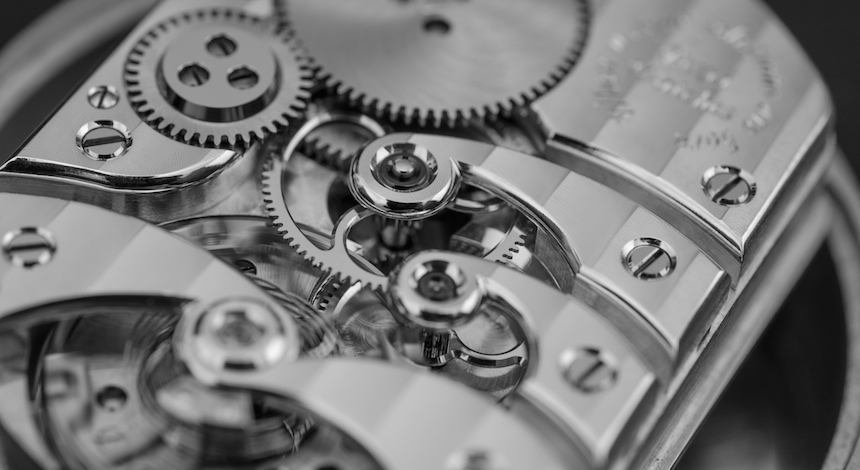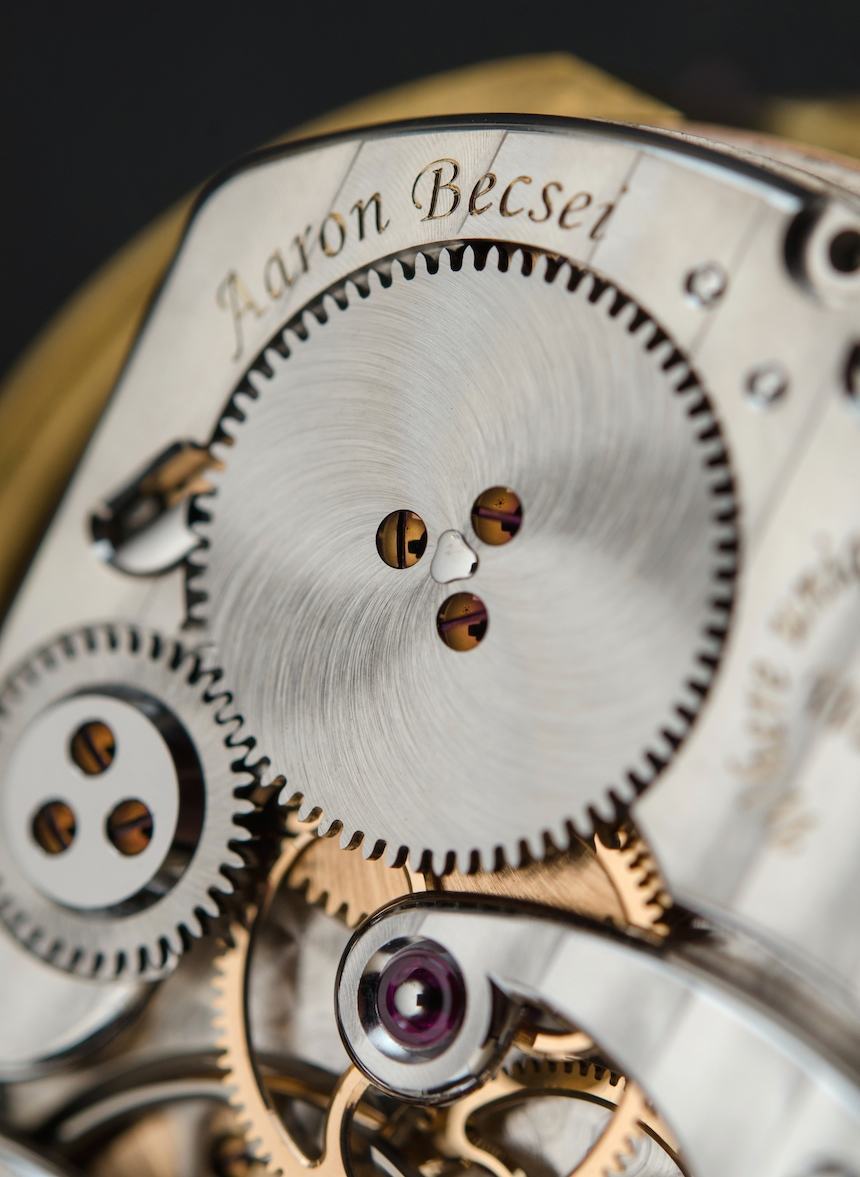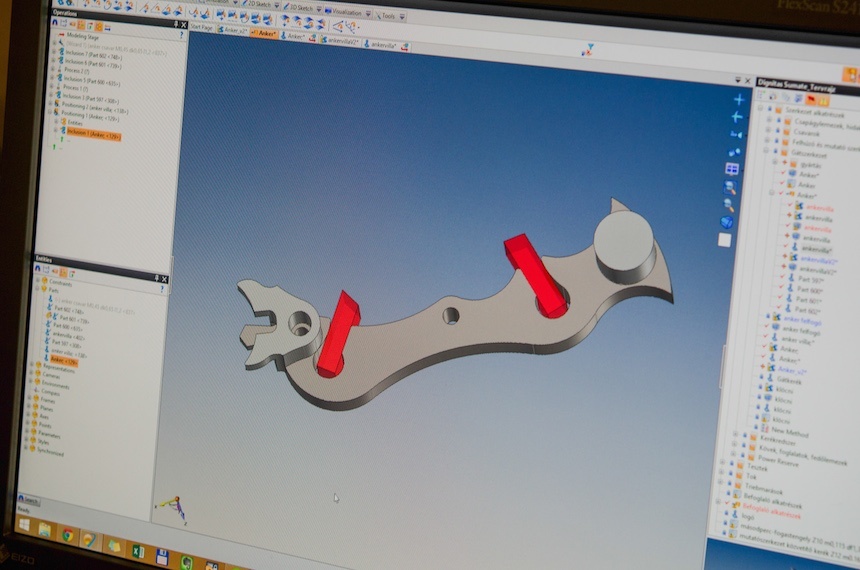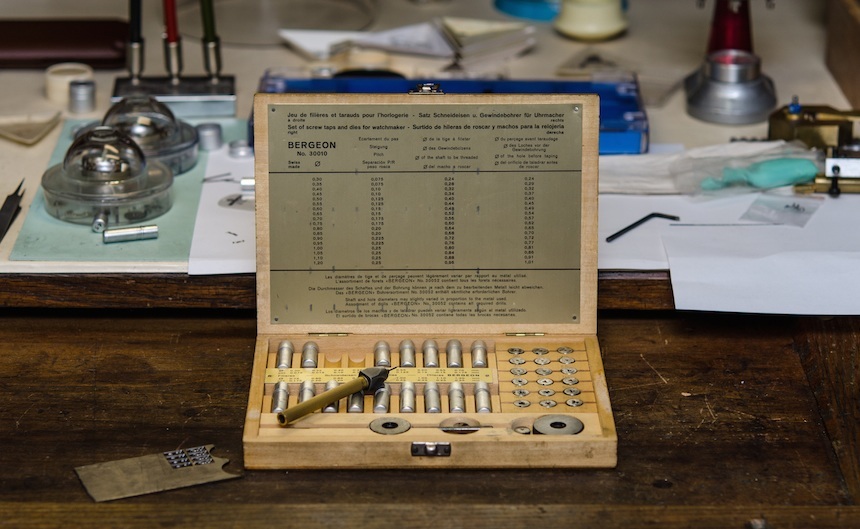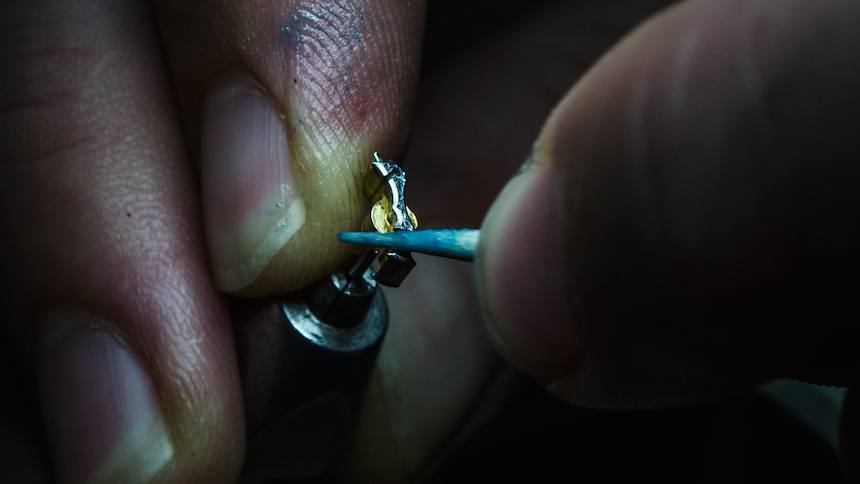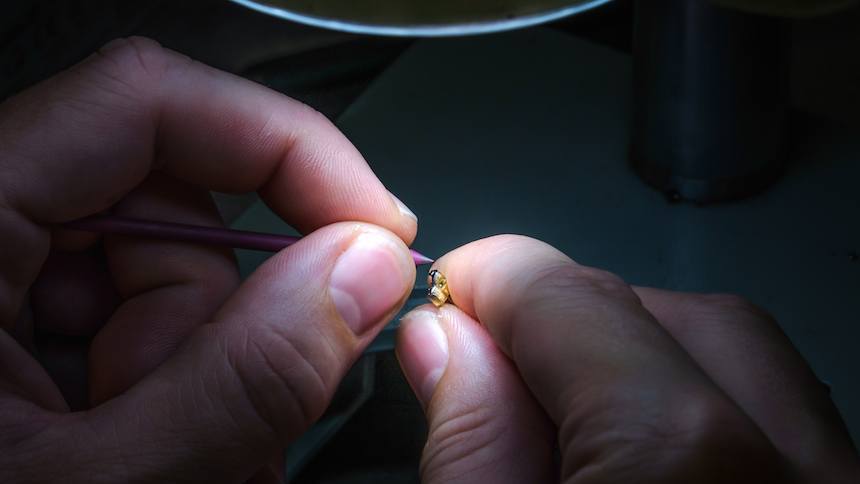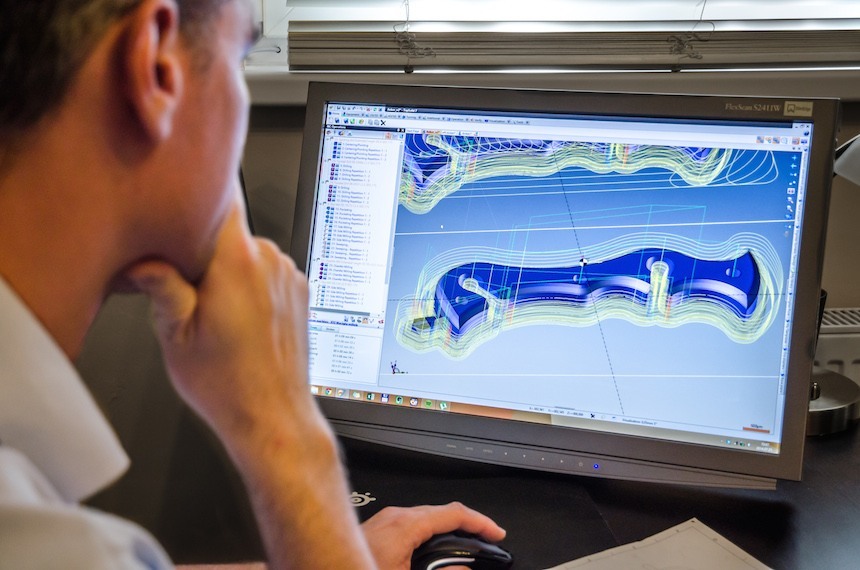
The development process of all in-house designed components are finalized using CAD-CAM software – using a selection of refined computer software which require years of formal learning before they can be used to their full potential. The pallet fork is no exception to this rule – it is a component that is an indispensable piece in the escapement of the mechanical movement as, in a sense, it connects the oscillating balance wheel to the going train.
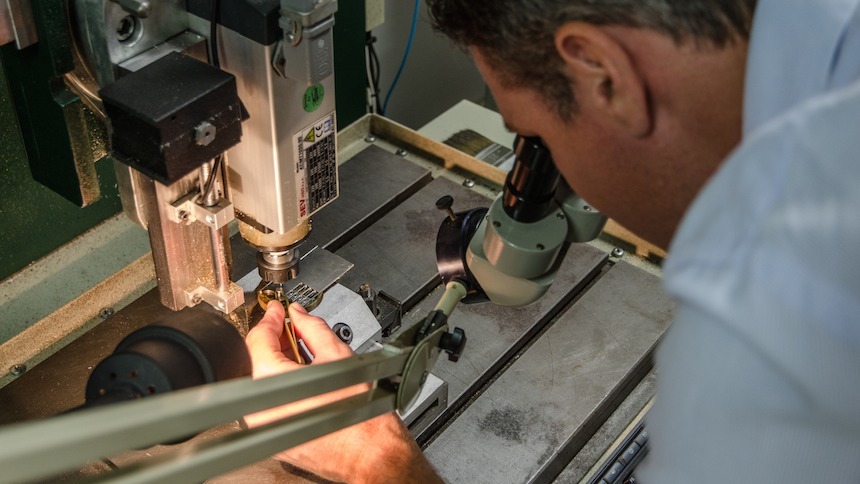
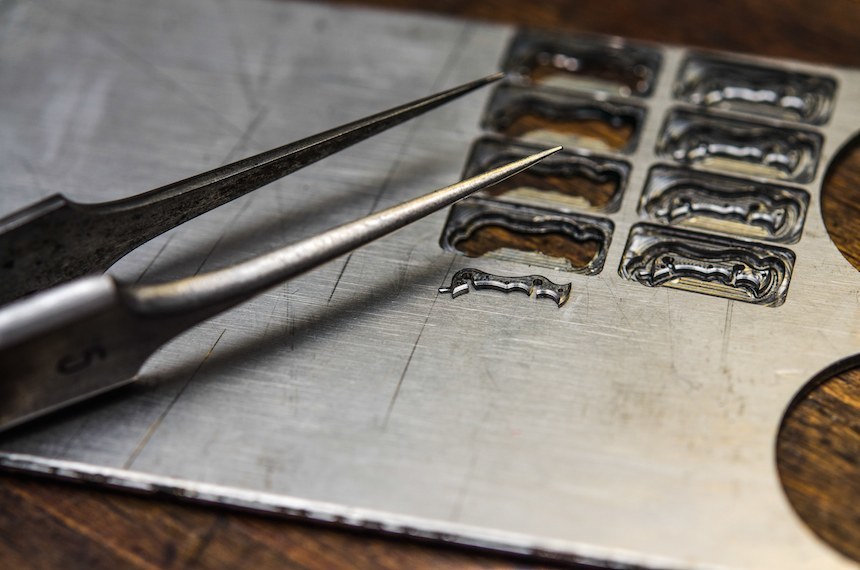
Using a CNC machine that was modified to suit the special requirements of watch movement production, the (very) rough pieces are cut from a slate of titanium. In the image above, you see two sets of four forks – the first set had to be redone, as there was a calibration issue with the machine which resulted in the microscopic center holes to be drilled ever-so-slightly off from where they should be. The tilting action of the pallet fork requires extremely accurate geometrics, so such an error is of course unaffordable – and the waste pieces cannot be fixed. The reason why four pieces are made from each is that Aaron starts working on some rough components in batches of three – with one extra piece being made as a “back-up.” Bear in mind that this batch of three pallet forks covers more than half of his annual production.
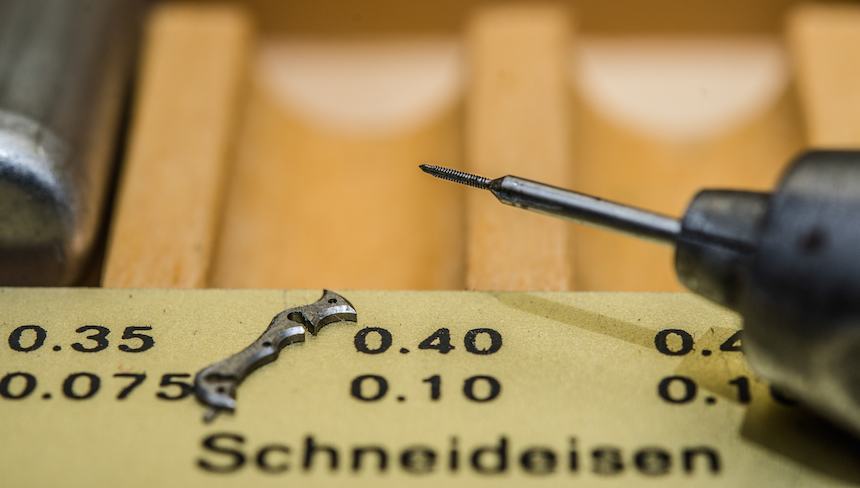
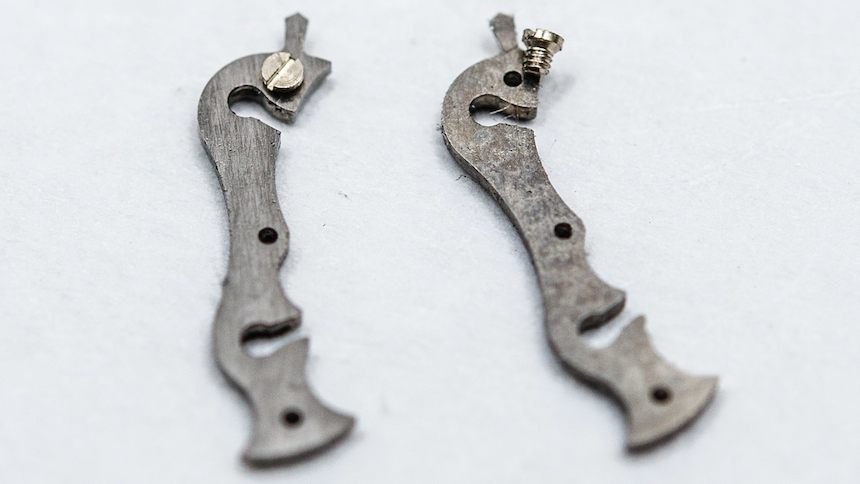
The rough component has some holes pre-cut by CNC so that their location within the piece is as accurate as possible. These holes will, however, have to hold screws, and so the holes have to be threaded, using traditional hand-tools, like the one you see above – that particular tool is used to cut a thread that is 0.40 millimeters wide, and there is a separate tool for every 0.05 millimeter variation in hole diameter.
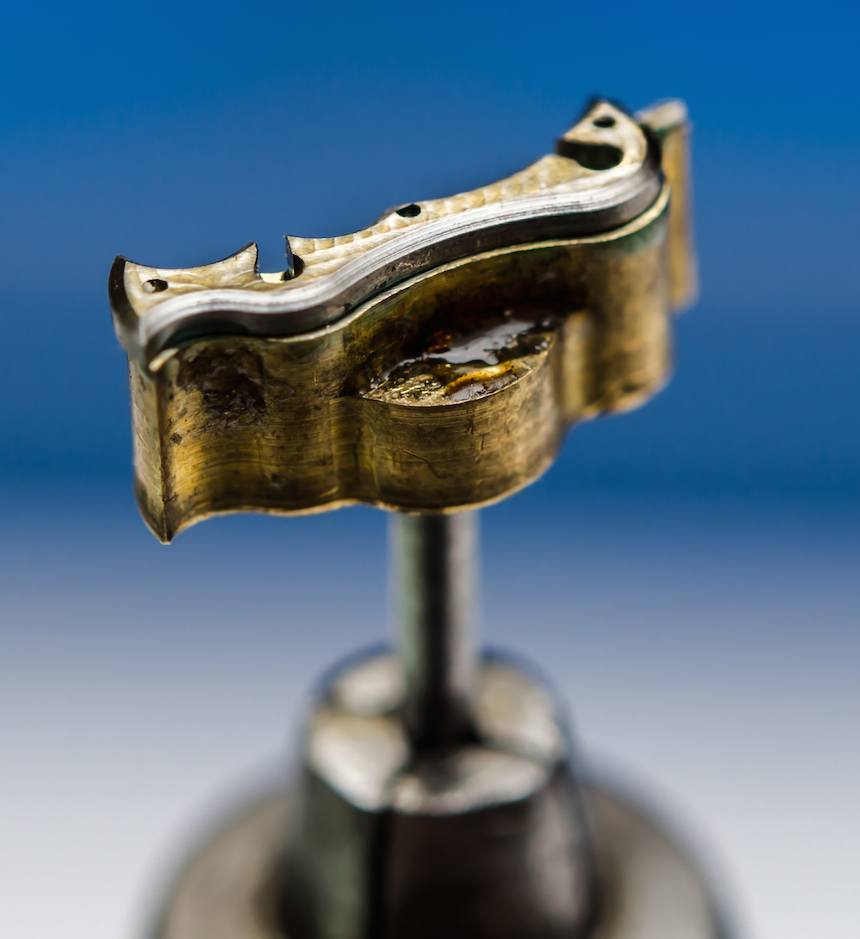
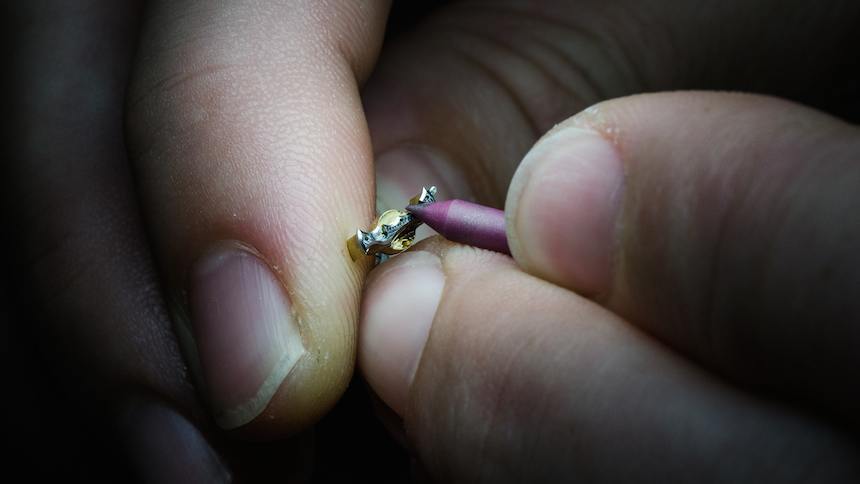
The rough component is what you see above, sitting on a custom made holder that was made so that the piece sits tight and secured when the decoration processes begin. As with all components, the finished one will have to have beveled and hand-polished edges and decorated flat surfaces – in this instance, mirror-black polishing. The latter means that the flat surface of the pallet fork is polished to an extent where it is so flat that it, when held at the right angle, reflects light in a way that the piece appears to be pitch black, while at other times, it displays a very high and extremely even, bright polish.
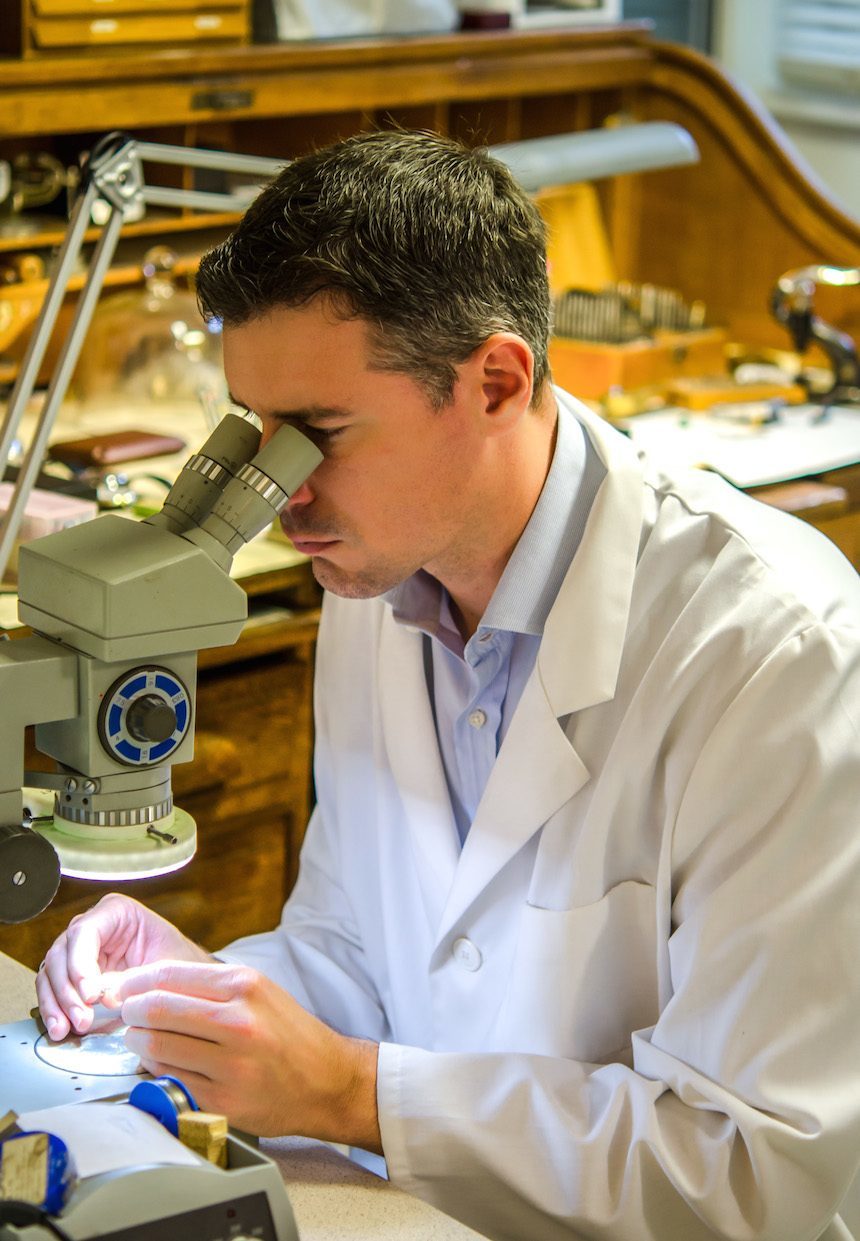
As a result of different polishing techniques, and the use of several different tools, the fully decorated piece is ready in about about 15 hours of work. The interesting thing is that I did visit Aaron’s workshop on three consecutive days at the time when he was working on this component and, even as an eye-witness, I found it difficult to comprehend the amount of time that it takes to get such a minuscule component (which will, for the most part, be hidden inside the movement) finished to perfection.
As far as decorating is concerned, that time is almost exclusively spent working under a microscope – for most of that time, once the rough component had been removed from the CNC machine, Aaron was working on this one piece by his microscope without saying a single word. I was, of course, busy as well, trying to figure out what kind of a personality does it take for someone to be able to do this 330+ days a year, all day long. While I couldn’t come up with a definitive answer, I did quickly decide that you would have to be a helpless introvert – and, more importantly, get joy and a sense of success every single time you get a little detail right.
When we look at a watch, we of course look at a finished item, and although we can imagine the effort that went into making it, the watchmaker cannot simply wait for the time to come when it is fully completed. I firmly believe that no one could make even one watch (let alone many more) if he/she did not find the joy in getting the smaller steps right.
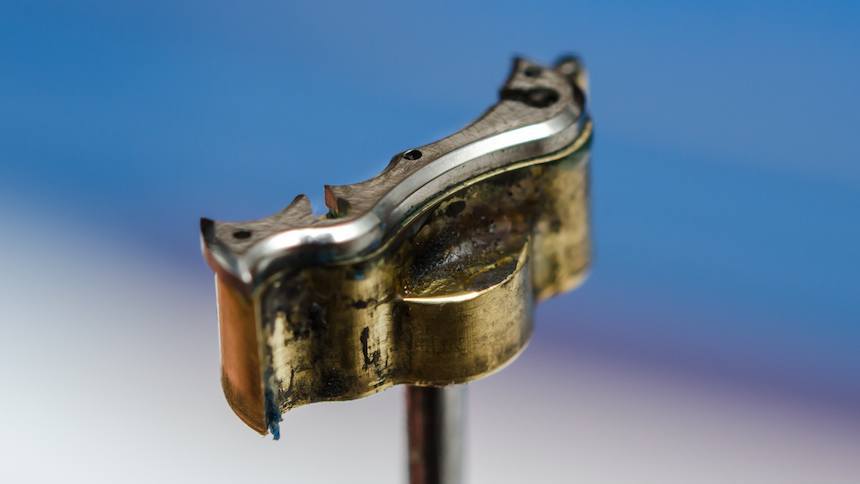
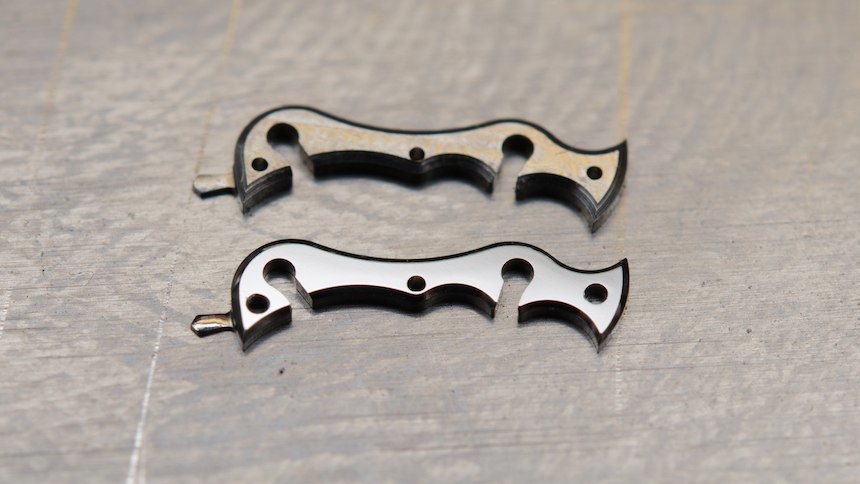
The finished component does speak for itself, however: in the image further above, the anglage is in progress – not complete, but it already gives a good idea of the progress made – while in the second shot, you see the completely finished component with polished bevels and black mirror finished surface, set right below a rough piece.
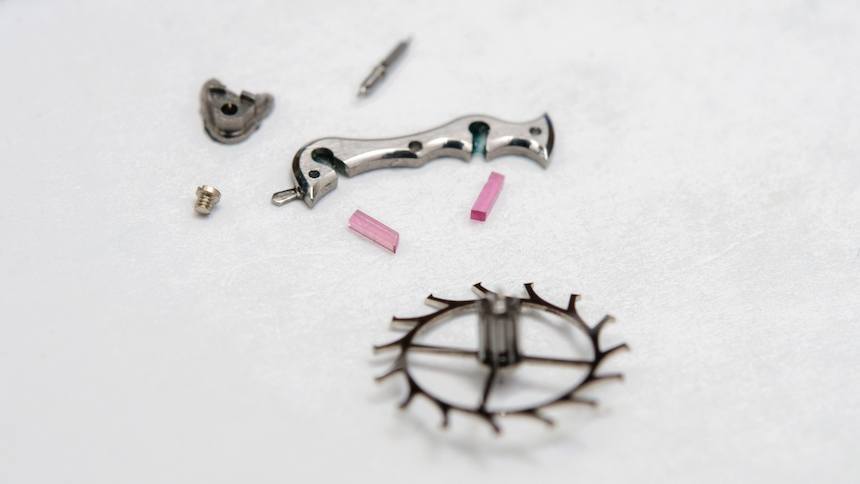
The finished assembly looks as what you see above: the pallet fork will have extra screws, the pinion, an extra end-component, as well as pallet jewels installed – all of which are made in-house – so that they can finally begin their work as the connection between the going train’s escape wheel and the balance wheel.
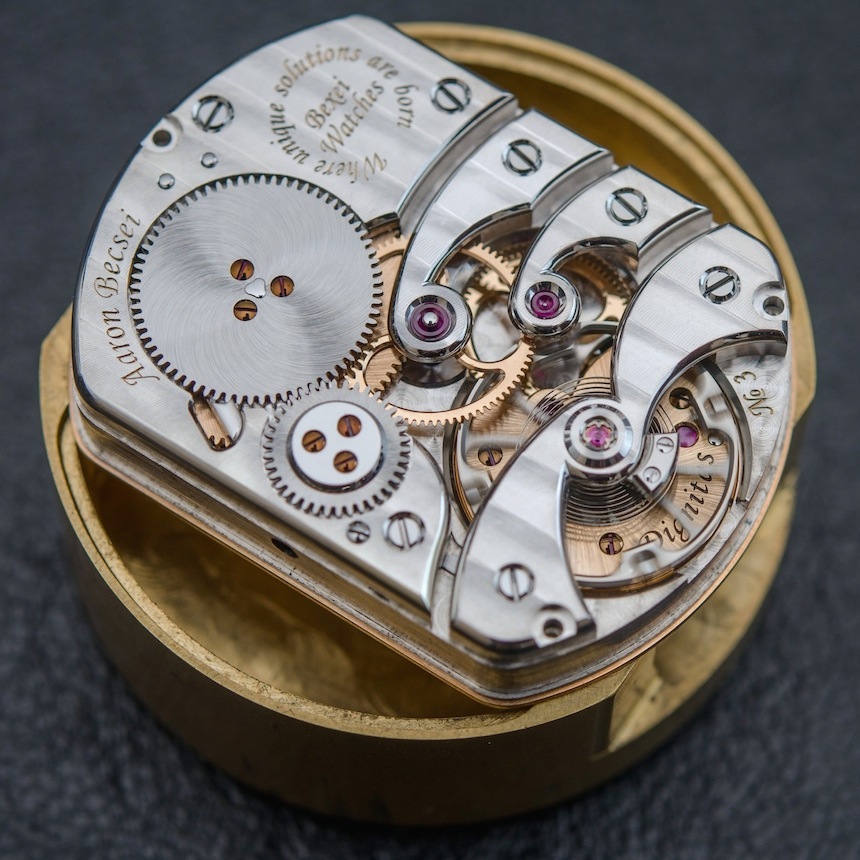
I believe that this brief insight – as we really did just scratch the surface – into the efforts that are required to create a beautifully finished final part, will give you an idea of what to expect to have happened to all the other components that you see in the picture above showing the finished movement. The bridges, cocks, wheels, gears, screws, screw-heads, pinions, have been cut and decorated in the same way as what we have shown – albeit, of course, with a greater range of different manufacturing and finishing techniques.
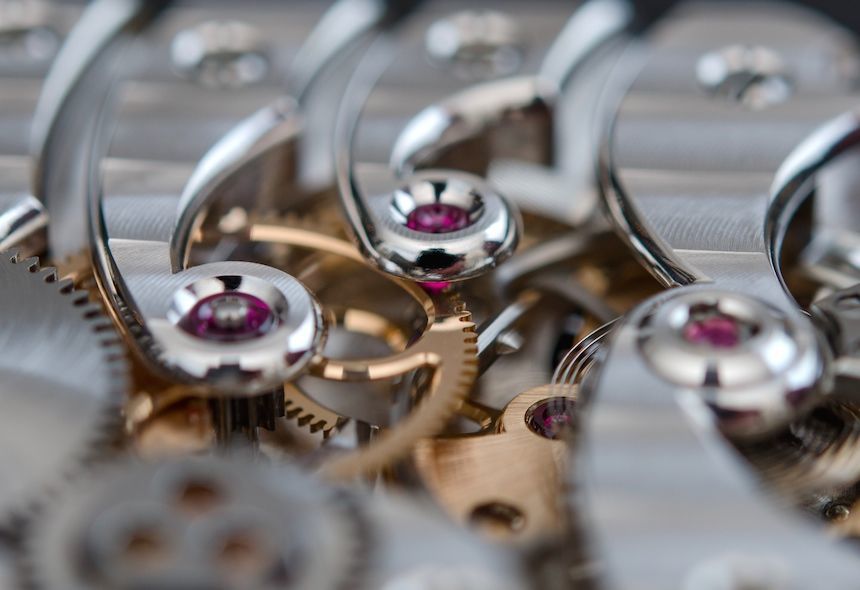
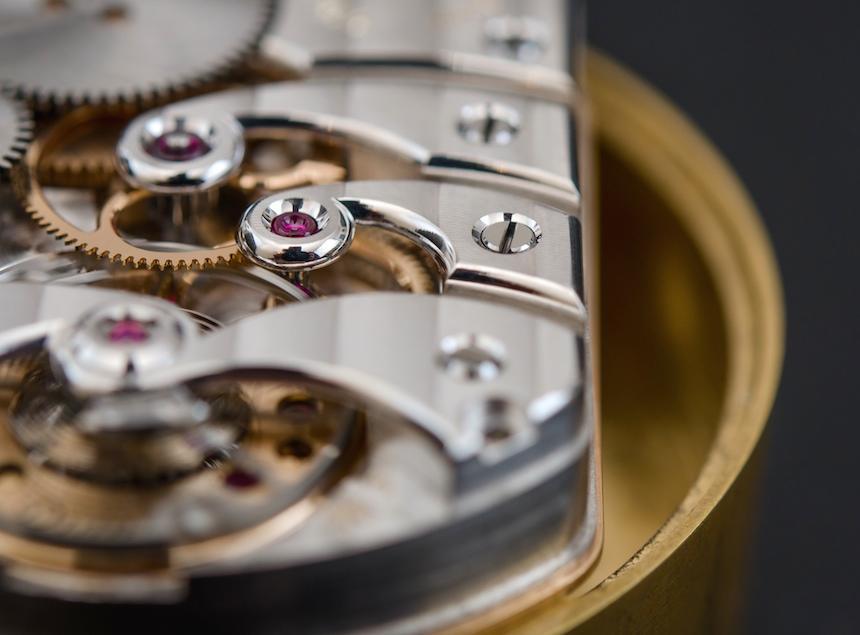
What I feel whenever I enjoy the privilege of seeing the work of some of the best independent watchmakers of today is that the result of their work means a cumulation of perfectly refined details. It is a mind-boggling maze, a melting pot of perfection and while dial – and even movement – designs and their aesthetic appeal is subjective, perfection in their execution is very much objective.
Unfortunately, I am far from having met all important independents, but those I did have the pleasure of meeting were – as I could tell – born perfectionists who simply cannot endure looking at their own work and seeing a minor mistake stubbornly remaining in there somehow. What’s more, sometimes the mistake is not even visible with the bare eye, but they know it is there – when viewed under a loupe for example – and even when that is the case, they just have to get it right.
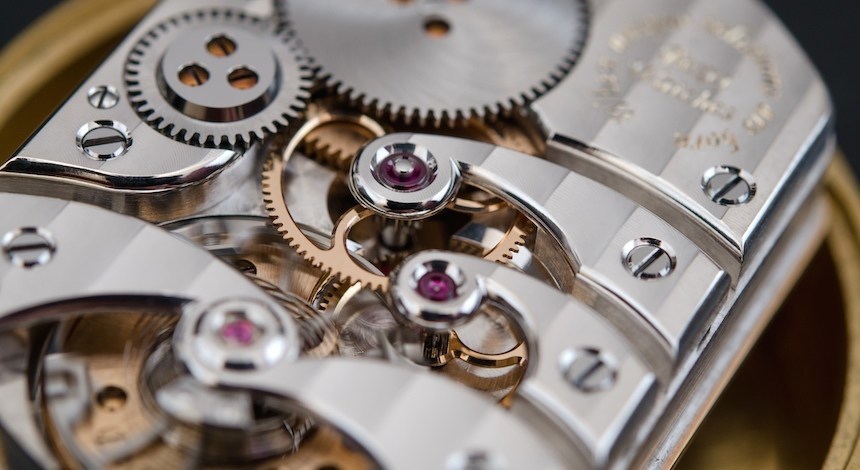
The reason why it takes over 15 hours to make just one component is not because it was calculated to be that time consuming – but simply because the component, as it is being refined through the decoration processes, develops and the material shows its inner imperfections. It is this ongoing progress of a developing piece of metal that ends with a completely even and deep finishing. And when we look at a movement, let that be as simple and straight-forward as this time-only caliber, everywhere we look, we see processes that were carried out until their very limits have been achieved – rather than until production quotas have been reached.
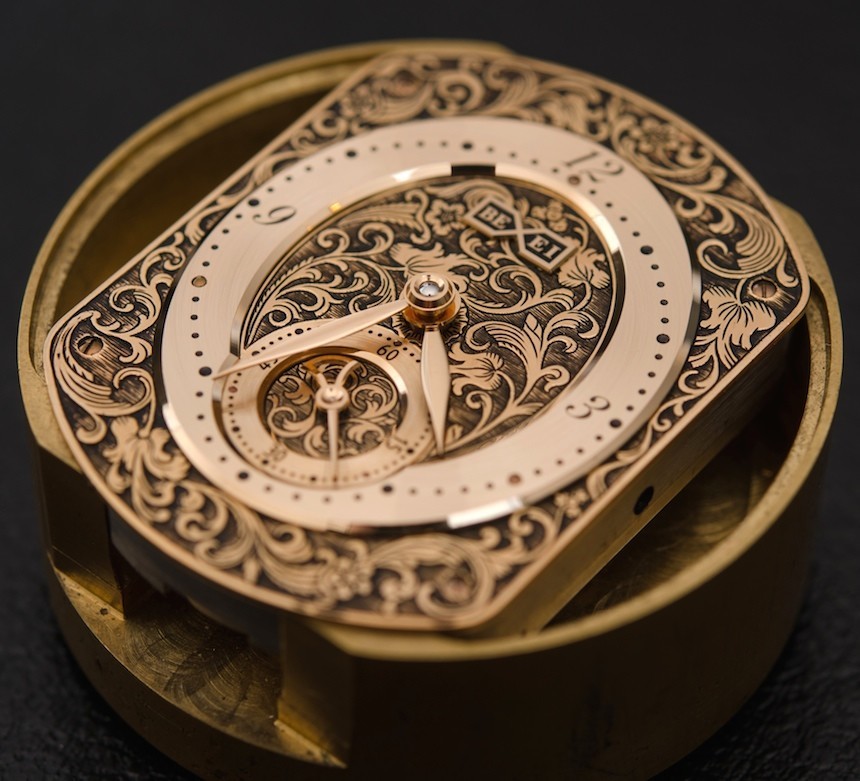
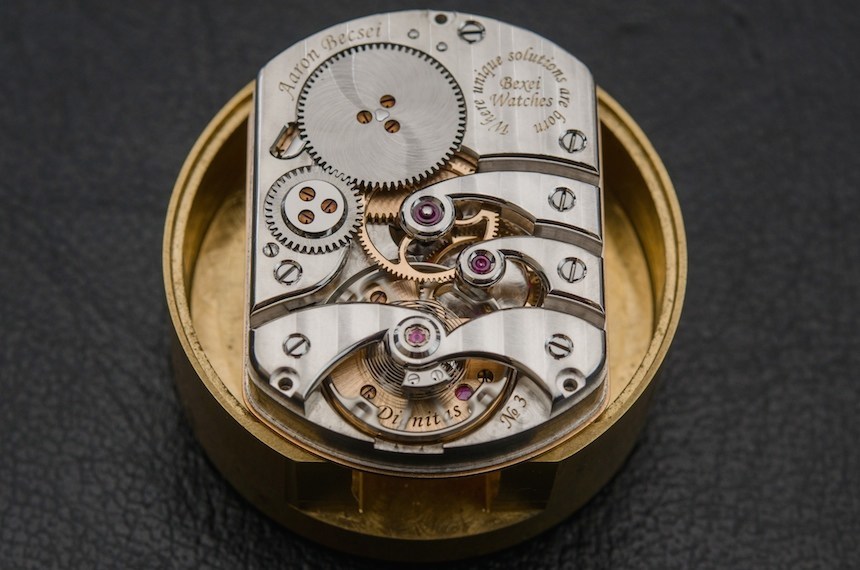
However, for that to happen, there have to be people who have what appears to be inexhaustible dedication, matched with the gift of finding fulfillment in getting the minuscule steps right along the long way that leads to the finished item. Beyond interesting, unusual, and often bespoke designs, a major reason for the appeal and success of today’s most dedicated independent watchmakers lies in the fact that there are people out there who can appreciate this weird form of insanity and, more importantly, the products that it results in. I guess everyone who read this piece is one of those people – and as long as some of us will be able to commit to buying these products (of which I have no doubt), the independent scene in horology will continue to live on. bexei.hu


